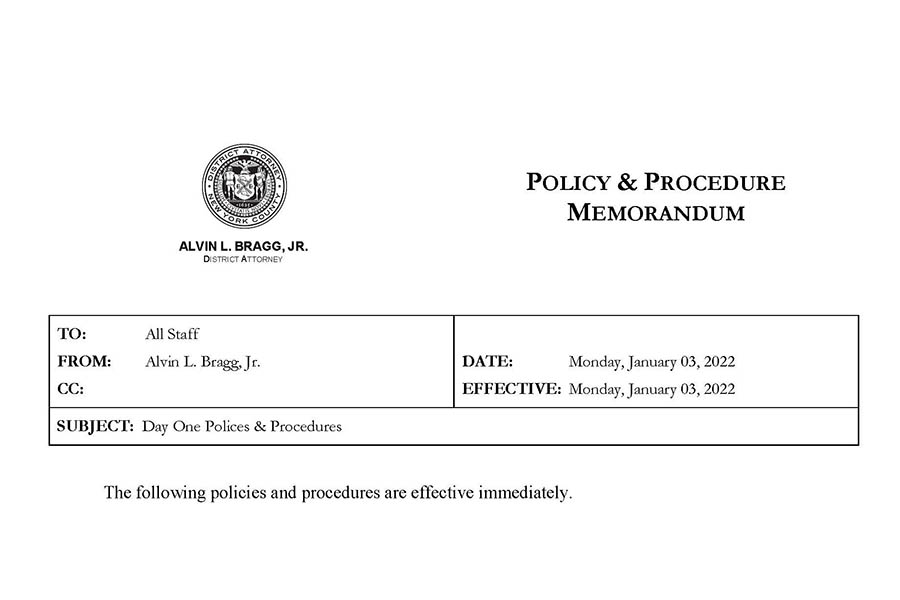In January 2017, the New Jersey Legislature amended the State Constitution and passed legislation to dramatically alter the process by which courts determine whether a defendant is held in jail – rather than released – while awaiting trial. While defendants previously could secure pretrial release by paying bail money to the court, the new system, commonly referred to as, simply, “Bail Reform,” conditions pretrial release upon a judge’s determination of the likelihood that the defendant will fail to appear in court or commit another offense, without consideration of the defendant’s financial resources.
The change has been dramatic for criminal practitioners, who must learn a brand new procedural system and engage in frequent litigation over the yet-unresolved legal questions in the gray areas of the statute. But it is has been even more dramatic for certain defendants who, having been accused of a crime, now must spend several days in jail until they have the opportunity to appear before a judge and plead for release, rather than being able to secure immediate release by posting monetary bail. In this new bail regime, the fast retention of competent counsel is critical, not only to secure the defendant’s release, but also to obtain valuable information about the State’s case during newly-expanded pretrial hearings.
Why Bail Reform?
Bail Reform is rooted in the principles that defendants are presumed innocent until proven guilty, and that no defendant should be penalized with incarceration as a direct result of his or her inability to post monetary bail. Notwithstanding the presumption of innocence afforded defendants in New Jersey, prior to Bail Reform, on average more than 5,000 people were incarcerated in New Jersey county jails awaiting trial at any given time. More than 12% of inmates were held because of their inability to post $2,500 or less. The primary purpose of Bail Reform is to remove economic considerations from the difficult question of whether a defendant, who is presumed innocent, should be held in jail until trial.
The Process
Prior to Bail Reform, judges set a monetary bail based on the severity of the offense, the defendant’s prior record, and other factors related to the likelihood that the defendant would appear in court if released. A chart contained ranges of monetary bail for given offenses, and judges normally set a monetary bail within that range. The process of setting a bail usually took minutes for any given defendant, and the process was typically complete within a few hours of arrest. A defendant with the resources to post monetary bail could often secure release even before he or she was transferred to county jail.
Under the old system of monetary bail, the defendant would simply lose his bail money if he failed to appear in court, providing the incentive to be present at future court proceedings. Legally, the only purpose of bail under the old system was to secure the defendant’s presence at the next proceeding – not to promote public safety – though in practical terms, prosecutors requested high bails to protect the community on those defendants they felt were likely to reoffend. The new system of bail does away with that fiction, and makes likelihood of re-offense one of the primary determinants of whether a defendant will be detained until trial. The factors the court now considers are the following:
- The Public Safety Assessment
Under Bail Reform, any defendant who is charged on a warrant is temporarily detained in jail to allow the preparation of a “risk assessment” that includes a recommendation to the judge whether the defendant should be detained, released, or released with certain conditions. The risk assessment, known as the “Public Safety Assessment”, or PSA, attempts to objectively measure a defendant’s risk of absconding or committing another offense if released, using metrics such as age; the nature of the charged offense; whether the defendant had another charge pending at the time of the present offense; and whether the defendant has prior convictions, prior violent offenses, prior failures to appear in court, and whether the defendant was previously incarcerated. Each of those factors generates a score, and the total determines whether the PSA will recommend release or detention. Perhaps most important to defendants, however, is the fact that the statute affords a full 48 hours from the time of arrest for completion of the PSA. That means that a person arrested on a warrant will wait in jail for up to 48 hours just to get to the first step in the process.
- Conditions of Release, Pretrial Supervision, and Electronic Monitoring
Prior to bail reform, there was no official mechanism for the widespread use of technology-based alternatives to pretrial detention, such as GPS monitoring and remote reporting. Unlike the federal system of pretrial release, which the New Jersey system largely emulates, there was no administrative agency in New Jersey dedicated to the monitoring of defendants out on bail. Now, the court may order that a defendant report to a pretrial services program or be placed on home supervision with electronic monitoring, under the supervision of pretrial services.
- The Prosecutor’s Motion for Detention and the Detention Hearing
The statute also authorizes the prosecutor to file a motion seeking detention of a defendant if the defendant is charged with certain serious crimes (or any offense involving domestic violence, regardless of severity), or where the prosecutor believes there is a “serious risk that the defendant will not appear in court as required, will pose a risk to another person or the community, or will attempt to obstruct justice.” A successful motion for detention means that the defendant must stay in jail until his trial. The constitutional right to bail that was previously afforded all defendants no longer exists, but the prosecution must make a greater showing of proof at the detention hearing.
If the prosecutor files a detention motion, a defendant is entitled to a hearing within three days. At the hearing, the defendant has the right to counsel, the right to testify, present evidence, cross-examine witnesses, and to present information by proffer (though the precise evidentiary parameters of the detention hearing are the subject of pending litigation). Such detention hearings did not exist under the old bail regime.
Quite significantly, at the detention hearing the prosecutor must also “establish probable cause that the eligible defendant committed the predicate offense.” Never before has the prosecutor had a duty to establish “probable cause” or present evidence at such an early stage of a criminal proceeding. So while it is never a positive for a defendant to be the subject of a prosecutor’s motion for detention, the silver lining is that the defendant’s attorney will gain an invaluable opportunity to obtain discovery and cross-examine witnesses. A savvy defense attorney understands that bail reform provides new tools by which to build a strong defense early in a prosecution.
The overall impact of the detention motion on the liberty of defendants remains to be seen. It is premature at this point to conclude whether a given defendant who might have made bail under the old system will now be forced to wait for his trial in jail. The decision on whether to release a defendant with conditions is made by individual judges.
Speedy Trial Guarantees
The Bail Reform legislation also places time limits on prosecutors to reach certain stages of the prosecution. A defendant who is detained must be indicted (i.e., the case presented for a finding of probable cause by a grand jury) within 90 days), or else the defendant must be released. A defendant who is detained must go to trial within two years of being detained, or he must be released, notwithstanding the risk to the community.
The Challenges in Implementation
The primary challenge facing the courts, prosecutors, and defense attorneys is the dramatic increase in litigation at the early stages of a criminal case. Whereas judicial involvement in a case was fairly minimal until months after an arrest, now an extremely important decision – whether the defendant must remain in jail until trial – is made within days of arrest, in many cases with a criminal investigation still ongoing. This places great pressure on prosecutors and police to build their cases quickly, as they will have to establish probable cause at a hearing within just a few days. As this article is being written, several appeals are being litigated to establish how much discovery must be provided to a defendant and the extent to which the State must present witnesses at detention hearings. And the simple increase in court time will tax judicial resources across the board.
How Defendants Can Benefit
Obviously, the greatest benefit of Bail Reform accrues to those defendants of limited means who would have remained in jail on relatively minor charges due to their inability to pay monetary bail. But Bail Reform is not just about economic equity. Experienced practitioners understand that the new procedural vehicles created by Bail Reform also provide new opportunities to learn more about the State’s case – and perhaps even cross-examine critical witnesses – early on in the proceeding. A good defense attorney, if retained early, will be able to spot weak cases sooner and will gain ammunition by which to mount more efficient and focused independent investigations.
Here at the law offices of Stahl Gasiorowski Criminal Defense Lawyers, we see Bail Reform as a way to get even better outcomes for our clients. If you or a loved one has been arrested on an indictable charge, it is imperative to retain an experienced defense attorney who understands the finer points of Bail Reform.
Stahl Gasiorowski Criminal Defense Lawyers aggressively defend individuals charged with white collar crimes, domestic violence, drug crimes and criminal charges. Mr. Olesnycky’s cases have been widely covered in the news, including the New York Times, CBS This Morning, NBC4 New York, the Associated Press, the Boston Globe, NJ.com, the Star Ledger, and ESPN. To contact us to discuss your case, call 908.301.9001 for our NJ office and 212.755.3300 for our NYC office, or email us at aolesnycky@stahlesq.com.



Leave A Comment